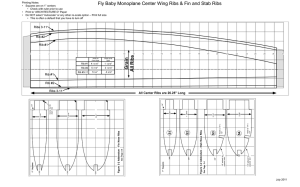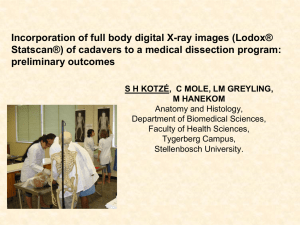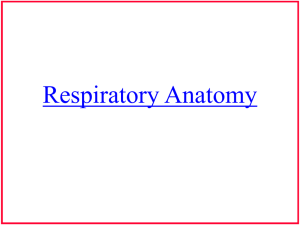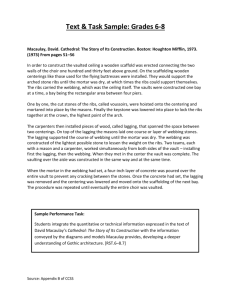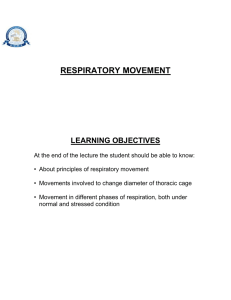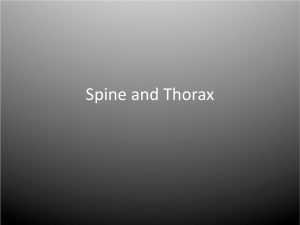walls modelling
advertisement
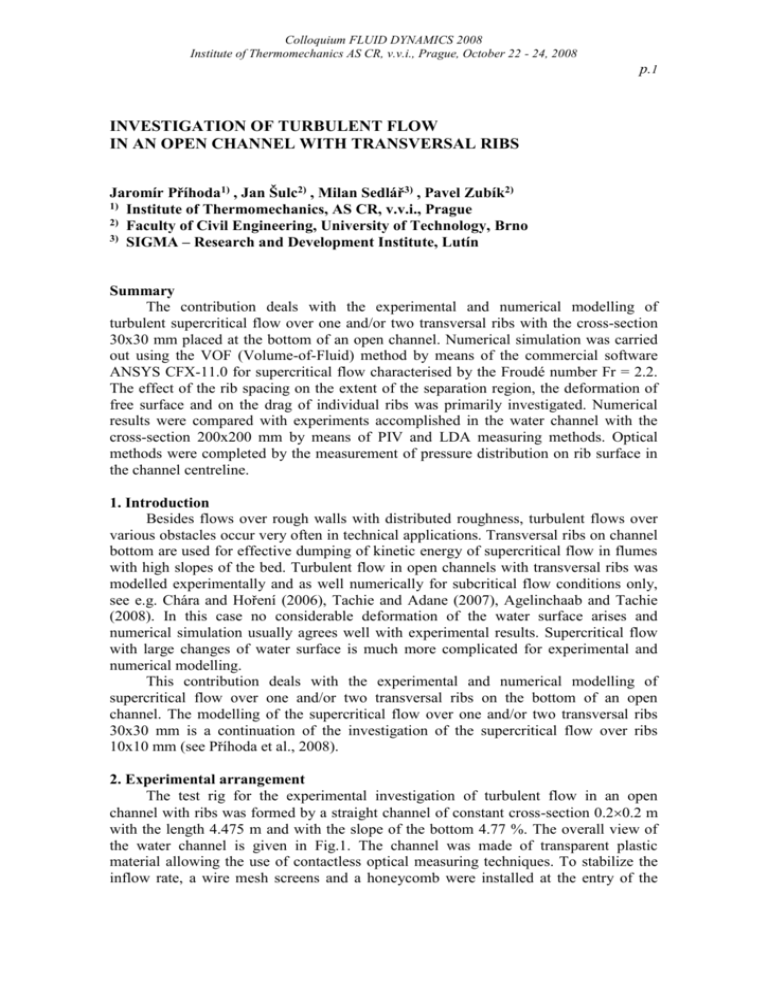
Colloquium FLUID DYNAMICS 2008 Institute of Thermomechanics AS CR, v.v.i., Prague, October 22 - 24, 2008 p.1 INVESTIGATION OF TURBULENT FLOW IN AN OPEN CHANNEL WITH TRANSVERSAL RIBS Jaromír Příhoda1) , Jan Šulc2) , Milan Sedlář3) , Pavel Zubík2) 1) Institute of Thermomechanics, AS CR, v.v.i., Prague 2) Faculty of Civil Engineering, University of Technology, Brno 3) SIGMA – Research and Development Institute, Lutín Summary The contribution deals with the experimental and numerical modelling of turbulent supercritical flow over one and/or two transversal ribs with the cross-section 30x30 mm placed at the bottom of an open channel. Numerical simulation was carried out using the VOF (Volume-of-Fluid) method by means of the commercial software ANSYS CFX-11.0 for supercritical flow characterised by the Froudé number Fr = 2.2. The effect of the rib spacing on the extent of the separation region, the deformation of free surface and on the drag of individual ribs was primarily investigated. Numerical results were compared with experiments accomplished in the water channel with the cross-section 200x200 mm by means of PIV and LDA measuring methods. Optical methods were completed by the measurement of pressure distribution on rib surface in the channel centreline. 1. Introduction Besides flows over rough walls with distributed roughness, turbulent flows over various obstacles occur very often in technical applications. Transversal ribs on channel bottom are used for effective dumping of kinetic energy of supercritical flow in flumes with high slopes of the bed. Turbulent flow in open channels with transversal ribs was modelled experimentally and as well numerically for subcritical flow conditions only, see e.g. Chára and Hoření (2006), Tachie and Adane (2007), Agelinchaab and Tachie (2008). In this case no considerable deformation of the water surface arises and numerical simulation usually agrees well with experimental results. Supercritical flow with large changes of water surface is much more complicated for experimental and numerical modelling. This contribution deals with the experimental and numerical modelling of supercritical flow over one and/or two transversal ribs on the bottom of an open channel. The modelling of the supercritical flow over one and/or two transversal ribs 30x30 mm is a continuation of the investigation of the supercritical flow over ribs 10x10 mm (see Příhoda et al., 2008). 2. Experimental arrangement The test rig for the experimental investigation of turbulent flow in an open channel with ribs was formed by a straight channel of constant cross-section 0.20.2 m with the length 4.475 m and with the slope of the bottom 4.77 %. The overall view of the water channel is given in Fig.1. The channel was made of transparent plastic material allowing the use of contactless optical measuring techniques. To stabilize the inflow rate, a wire mesh screens and a honeycomb were installed at the entry of the p.2 straight inflow part. One and/or two transversal ribs of the square cross-section bb = 3030 mm were placed at the channel bottom with spacing t = 180; 300, 600 and 900 mm. The distance of the first rib from the channel entry was 1.165 m. Fig.1 Overall view of the water channel Two contactless optical methods for velocity field measurement have been used the PIV technique for velocity measurements in selected channel sections, and the LDA technique for measurements of one velocity component in selected points of the flow field. The measurement of the supercritical flow over two ribs was carried out for the mean bulk velocity Um = 1.8 m/s and for the initial height of the water level h = 70 mm, i.e. for the Reynolds number Reb = Umb/ = 56400 and the Froude number Fr = Um/(gh)1/2 = 2.18. The whole length of the investigated section was 1.5 m. This section starts in the distance of 0.5 m before the first rib where boundary conditions for the numerical simulation were examined in detail using the PIV method. In this section, velocity profiles were recorded using the LDA method as well. At the chosen mean bulk velocity, the turbulence level in the stream core was about 2-2.5 %. The PIV measurements were taken at vertical and horizontal planes parallel with the channel axis with the aim to determine the general view of the flow with separation and secondary flows behind the first rib as well. In the mean vertical plane, profiles of mean and fluctuation longitudinal velocities were determined by the LDA method at selected sections x = const. Optical methods were completed by the measurement of pressure distribution on rib surface in the channel centreline. Mean values of four static pressures on the each side of the rib (frontal, upper and rear) were measured by means of pressure transducers. The height of the free surface was measured using the needle gauge. 3. Numerical simulation The numerical simulation was carried out by means of the commercial software ANSYS CFX 11.0 solving Reynolds-averaged Navier-Stokes equations including the gravity effect. The Volume-of-Fluid (VOF) method was used for the solution of freesurface flow. The two-equation turbulence models - especially standard k- turbulence model and the k-/k- SST model according to Menter (1994) - were tested, particularly their ability to describe the separation region behind ribs and the form of the free surface. A second-order scheme was used for calculations. The scheme reduced to the first order near discontinuities of the boundary. The computational domain constitutes one half of the channel width, i.e. the symmetrical boundary condition is applied in the symmetry plane (z = 0). A structured multi-block type grid refined near walls and in the region of free surface was used. The computational grid consists of 3 or 4 blocks for case of 1 or 2 ribs Colloquium FLUID DYNAMICS 2008 Institute of Thermomechanics AS CR, v.v.i., Prague, October 22 - 24, 2008 p.3 respectively and includes about 2.5x106 grid points depending on the spacing of ribs. For each configuration of ribs, the topology and refinement of the grid were adapted to the shape of free surface obtained by the first preliminary calculation. The detail of the computational grid in the symmetry plane for two ribs with spacing t = 300 mm is shown in Fig.2. Fig.2 Detail of the computational grid in the symmetry plane for two ribs 30x30 mm with spacing t=300 mm Values of first non-dimensional distance y+ from the bottom and ribs moved from 0.5 to 24. While the k- model uses standard wall functions, boundary conditions at the wall in the SST model are prescribed depending on the mesh density either in form of wall functions or by automatic switch to the low-Reynolds-number formulation, see Grotjans and Menter (1998). The distribution of mean velocity, turbulent energy, and dissipation rate was prescribed as inflow boundary conditions according to experimental data. According to value of the Froudé number, the mean value of static pressure was prescribed as the outflow boundary condition (so called supercritical boundary condition). The openboundary condition was applied at the upper boundary. 4. Results The analysis of the experimental and numerical results was concentrated mainly on the development of mean velocity and turbulent energy profiles with respect to flow separation behind ribs and to the corresponding changes of free surface. Further, the pressure drag of individual ribs was investigated including their dependence on the rib spacing, as well as the origin of secondary flow near the side walls of the channel behind ribs. Fig.3 Free-surface for flow over two ribs 30x30 mm with spacing t=300 mm (measured in the distance 50 mm from the symmetry plane) p.4 The velocity field measured by means of the PIV technique in the distance z = 50 mm from the channel axis is compared in Fig.3 with the picture obtained as the mean value of 50 images. In the background, the aerated layer near the free surface can be seen. Fig.4 Mean velocity profiles for two ribs 30x30 mm with spacing t = 300 mm (full line – k- model; dashed line – SST model) Mean velocity profiles in the symmetry plane for two ribs 30x30 mm with spacing t = 300 mm are shown in Fig.4. Velocity profiles obtained by means of the k- model (full line) and by the SST model (dashed line) are compared with experimental data from PIV technique. The agreement of calculated and measured velocity profiles is quite good. The difference between mean velocities measured by the LDA a PIV technique is really small in regions of attached flow but the LDA technique gives in the separated flow mean velocities slightly higher – the difference reaches up to 10%. The distribution of turbulent energy in the symmetry plane behind ribs is shown in Fig.5 for various spacing of ribs. Presented numerical results were obtained using the k model. For all cases, maximal values of turbulent energy in each distance from the rib lie in the outer part of the mixing layer over the separation region. The maximal value Colloquium FLUID DYNAMICS 2008 Institute of Thermomechanics AS CR, v.v.i., Prague, October 22 - 24, 2008 p.5 of turbulent energy is located approximately above the reattachment location, that is in the distance x/b = 9.55. The position of the turbulent energy maximum rapidly shifts to the wall after the reattachment. The mechanism of turbulent energy development is similar for flows over two ribs is, but due to the presence of the second rib the peaks of turbulent energy are not so high. Fig.5 Distribution of turbulent energy in the symmetry plane a) one rib; b) two ribs, t = 180 mm; c) two ribs, t = 300 mm The form of the free surface for flow over two ribs with spacing t = 300 mm is shown in Fig.6. The free surface obtained by numerical simulation is given as the distribution of the volume fraction of water αwater = 0.5 in the symmetry plane of the channel. Results of the k-ε model are shown by the full line while the ones of the SST model by the dashed line. Experimental results are shown by dotted lines. Further, the extent of separation region behind ribs obtained by experiment and by numerical simulation is compared in Fig.6a for the symmetry plane as well. Results obtained in the symmetry plane are given in Fig.6a and in the plane z = 0.09 mm, i.e. near the side wall, in the Fig.6b respectively. Due to high values of the Froude number Fr = 2.2 and b/h = 0.43, a relative high water transverse wave can be seen over the first rib with the maximal height hmax 0.15 m. The maximum of this wave in the plane z = 0.09 m lies somewhat upstream in comparison with that one in the symmetry plane. It can be seen from Fig.6b that behind the second rib an oblique wave arises at the side wall and moves to the channel centre. This wedge-shaped wave is well visible in flow visualisation. The separation region takes the whole distance between ribs whereas the length of the separation behind the second rib is much shorter due the effect of the transverse wave. The k- model gives surprisingly better results than the SST model which was however proposed to refine p.6 the prediction of decelerating flows with possible separation due to adverse pressure gradient. The comparison of numerical results with experimental data is very encouraging. a) symmetry plane (z = 0) b) distance z = 0.09 m from the symmetry plane Fig.6 Free surface in the channel with two ribs and spacing t = 300 mm The drag of individual ribs given by the pressure difference on the front and back sides of a rib was determined from experimental data and numerical simulations as well. The drag coefficient is given by the relation Cd = 2∆p/Um2 where ∆p is the mean value of the pressure difference on the front and back side of a rib and Um is the bulk velocity. Fig.7 Pressure distribution on the surface of two ribs with spacing t = 300 mm Colloquium FLUID DYNAMICS 2008 Institute of Thermomechanics AS CR, v.v.i., Prague, October 22 - 24, 2008 p.7 The pressure distribution given by the pressure coefficient Cp = 2(p – pb)/ Um2 is shown in Fig.7 for the front, upper and back sides of ribs 30x30 mm with distance t = 300 mm. The distance s is measured from the foot of the rib. Experimental data for the front and upper sides of both ribs are rather higher than numerical results. The agreement for the back side where the separation exits is quite good. Fig.8 Variation of the drag coefficient with rib spacing (numerical simulation by the k- model) The dependence of the drag coefficient Cd of both ribs on their spacing is given in Fig.8. For small spacing, the second rib lies in the wake of the first one and the pressure force can be oriented upstream. From some spacing, the drag of the second rib is higher due to existence of surface wave over ribs. The drag of both ribs approaches very slowly to the value determined for flow with one rib (dotted lines). Without regards to the accuracy of the pressure determination in experiments and numerical simulations, the agreement of measured and calculated values of the drag coefficient is quite good. 5. Conclusions The experimental and numerical modelling of the supercritical flow in an open channel with ribs 30x30 mm on its bottom was carried out for various geometrical configurations. The analysis was concentrated on the development of flow separation behind ribs and on the corresponding changes of free surface. Further, the pressure drag of individual ribs was investigated including their dependence on the rib spacing. The numerical simulation of the supercritical flow over one and/or two transversal ribs carried out by means of the commercial software ANSYS CFX 11.0 gives a quite good agreement with experimental data. An acceptable agreement of mean velocity and turbulent characteristic was achieved using two-equation turbulence models. As well a p.8 good agreement with experimental data was obtained for numerical results related to waving of free surface and the effect of rib spacing on their drag coefficient. Acknowledgement The work was supported by the grant project No.103/06/0461 of the Czech Science Foundation and by the Research Plan AV0Z20760514. References Agelinchaab M., Tachie M.F. (2008): PIV study of separated and reattached open channel flow over surface mounted blocks, Trans. ASME, J. Fluids Eng., 130, 061206-1-9 Příhoda J., Šulc J., Sedlář M., Zubík P. (2008): Experimental and numerical modelling of turbulent flow over transversal ribs in an open channel, Proc. Conf. Engineering Mechanics 2008 (Eds. Fuis V., Pásek M.), Svratka, 192-193 (CD-ROM 10 p.) Chára Z., Hoření B. (2006): Local resistance of surface mounted obstacles, Proc. Conf. Engineering Mechanics 2006 (Eds. Náprstek J., Fischer C.), Svratka, 126-127 (CDROM 9 p.) Grotjans H., Menter F. (1998): Wall functions for general application CFD codes, Proc. ECCOMAS 98, John Wiley & Sons, 1112-1117 Menter F.R. (1994): Two-equation eddy-viscosity turbulence models for engineering applications, AIAA J., 32, 1598-1605 Tachie M.F., Adane K.K. (2007): PIV study of shallow open channel flow over d- and k-type transverse ribs, Trans ASME, J. Fluids Eng., 129, 1058-1072
